The recent thunderstorms, rain, and overcast conditions have been a huge benefit for reduced irrigation demand and drought relief. On the flip side, these environmental conditions have created favorable conditions for early season late blight development, volunteer potato establishment, and summer annual weeds. Below is a list of spring management activities I encourage farmers to adopt to reduce the potential of late blight reoccurring in 2016.
1.) It is extremely important for growers to scout fields infected with late blight last year for volunteer potatoes, alternative host weeds such as nightshade, and late blight lesions on volunteer potatoes and nightshade. If infection is found, please report it to your cooperative extension office, local PCA, and county agriculture office ASAP so an alert can be posted. I scouted a few grain fields yesterday and I did NOT find late blight lesions on volunteer potatoes but late blight infection is a possibility. Hopefully, the weather turns hot and dry next week.
2.) Eliminate sources of inoculum in cull potatoes and waste potatoes. Methods of disposing cull and non-usable potatoes include feeding to livestock, burial, spraying with herbicides, or composting.
3.) Control volunteer potatoes and nightshade weeds! All growers should try to eliminate volunteer potatoes and nightshade in rotational crops, fallow fields, and field borders. This is extremely important in fields with late blight infection last year and fields that are directly down-wind from fields that had late blight last year. Cultivation and broadleaf herbicides are the most common methods for treating volunteer potatoes and nightshade weeds. Volunteer potatoes are more difficult to control than annual weeds, thus growers should follow the rate recommendations on herbicide labels for volunteer potato suppression. Several small grain herbicides with dicamba and fluroxypyr have label instructions for volunteer potato suppression in small grains.
4.) Scout 2016 potato fields regularly for late blight lesions especially during and after rainy, overcast weather and wet field conditions.
5.) Educate employees how to identify late blight symptoms and develop a preventative management plan for late blight.
6.) Avoid 12 hour irrigation sets and very frequent irrigations. Prolonged leaf wetness of 8+ hours is favorable for late blight infection!
Attached Images:
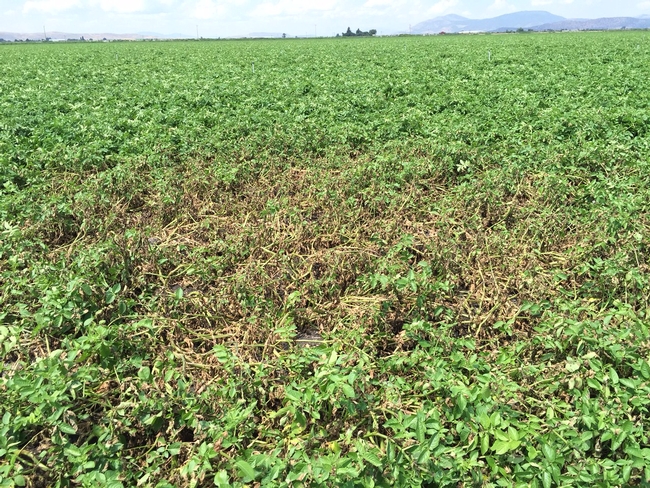
Late Blight Infestation in a Field
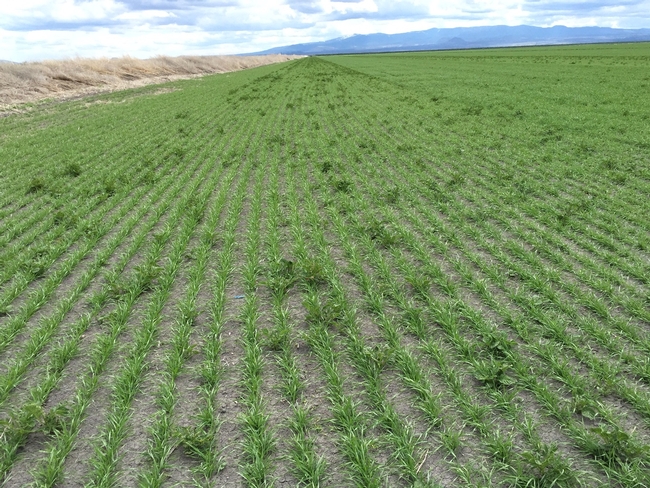
Volunteer Potatoes in Spring Planted Wheat
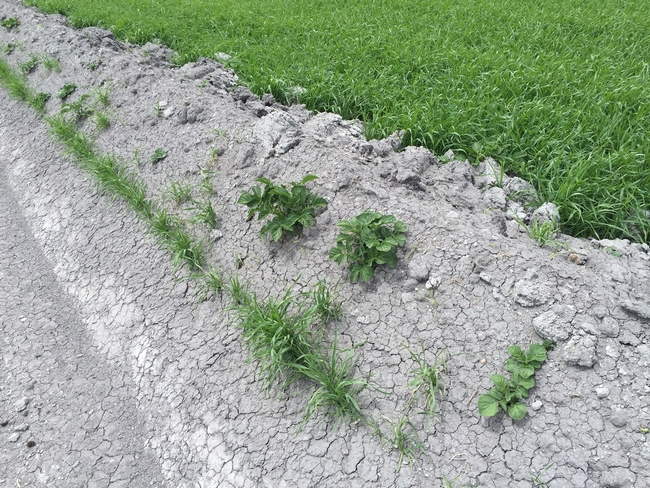
Eliminate Volunteer Potatoes Growing on Ditches and Field Borders
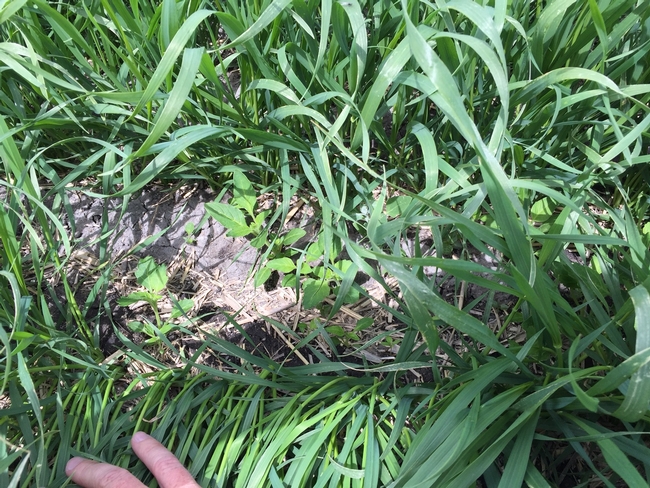
Hairy Nightshade in Spring Wheat
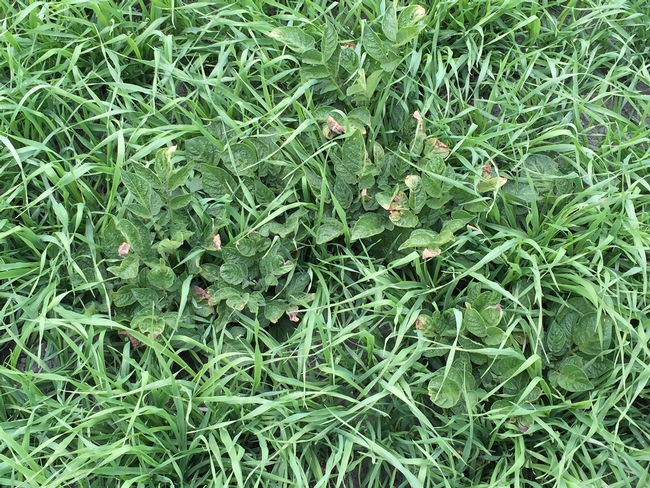
Old Frost Damage on Volunteer Potatoes - could be confused with Late Blight symptoms.
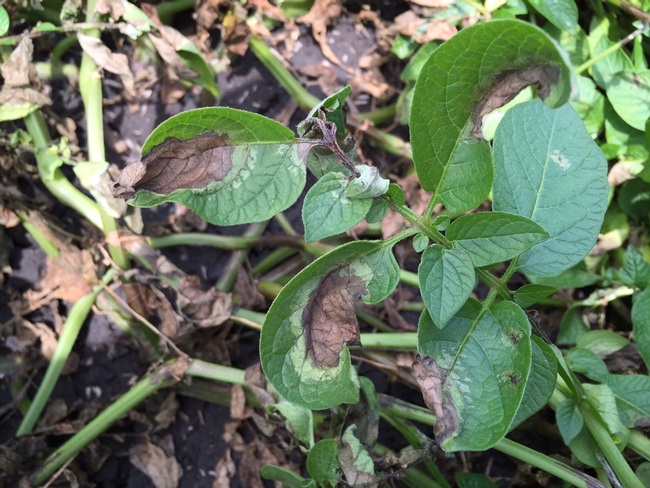
Late Blight Lesion on Potato Leaf
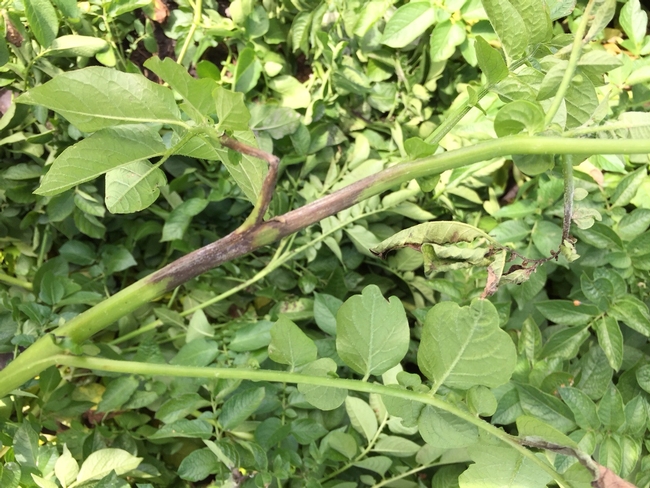
Late Blight Lesion on Potato Stem